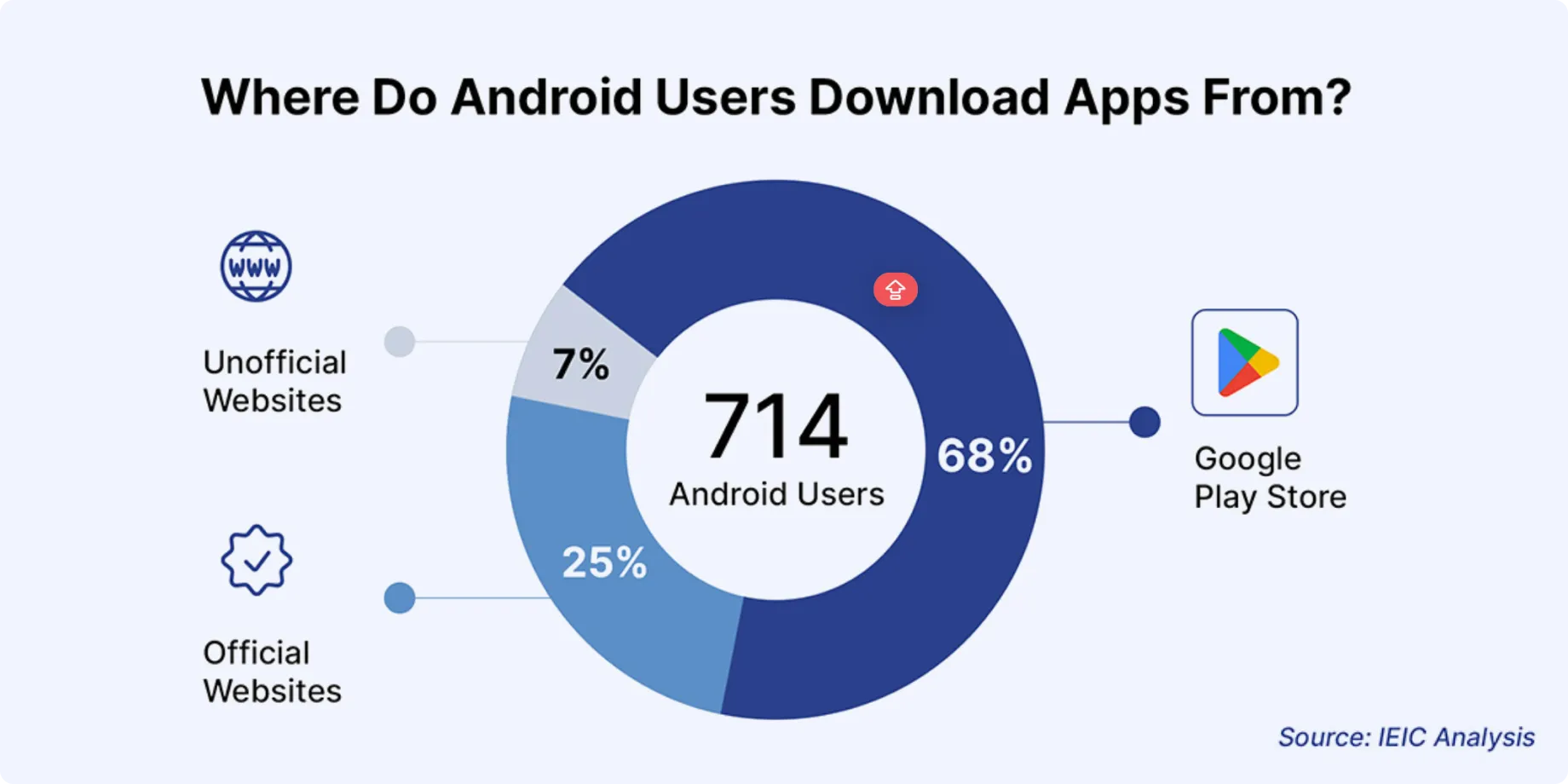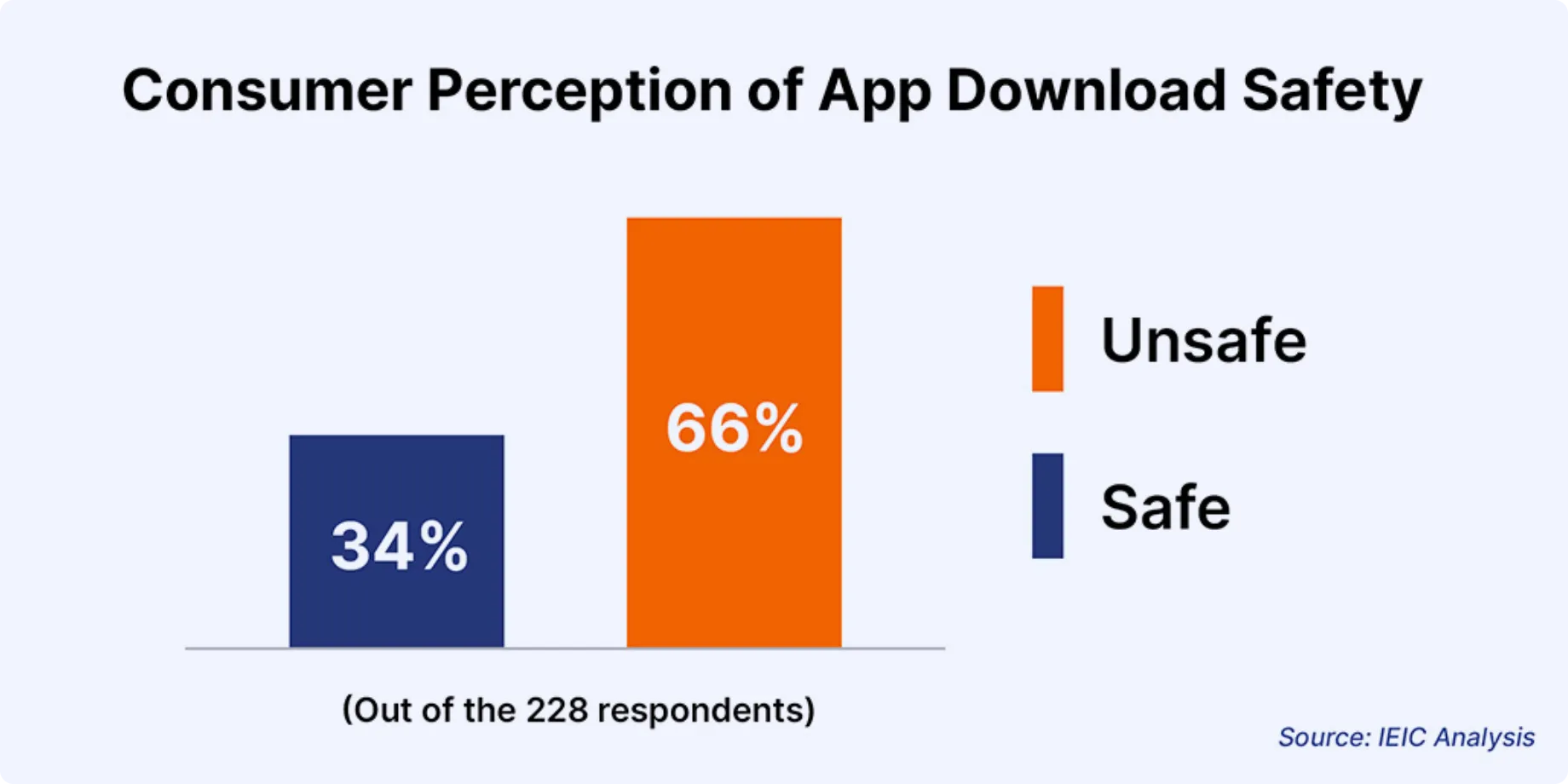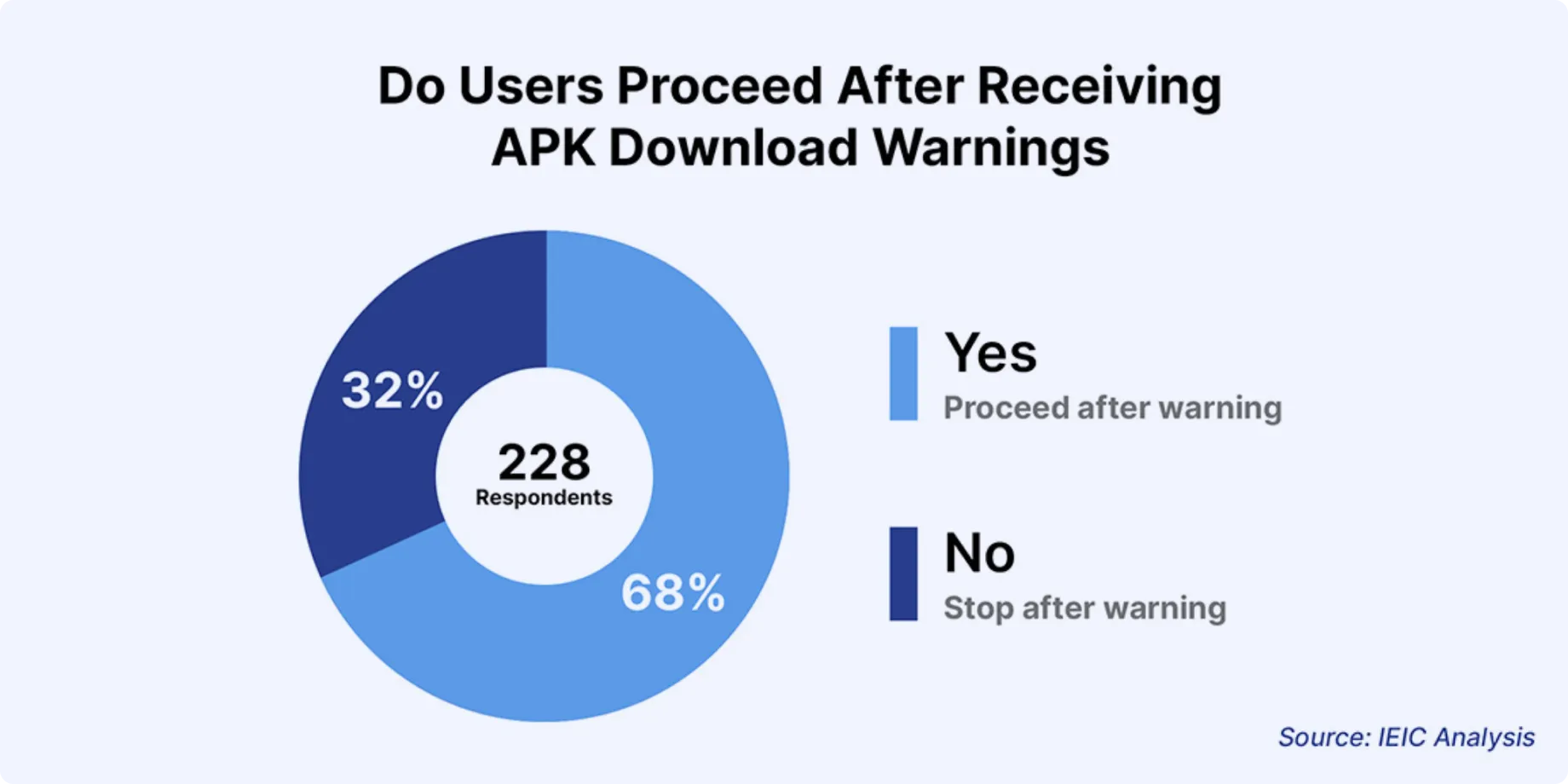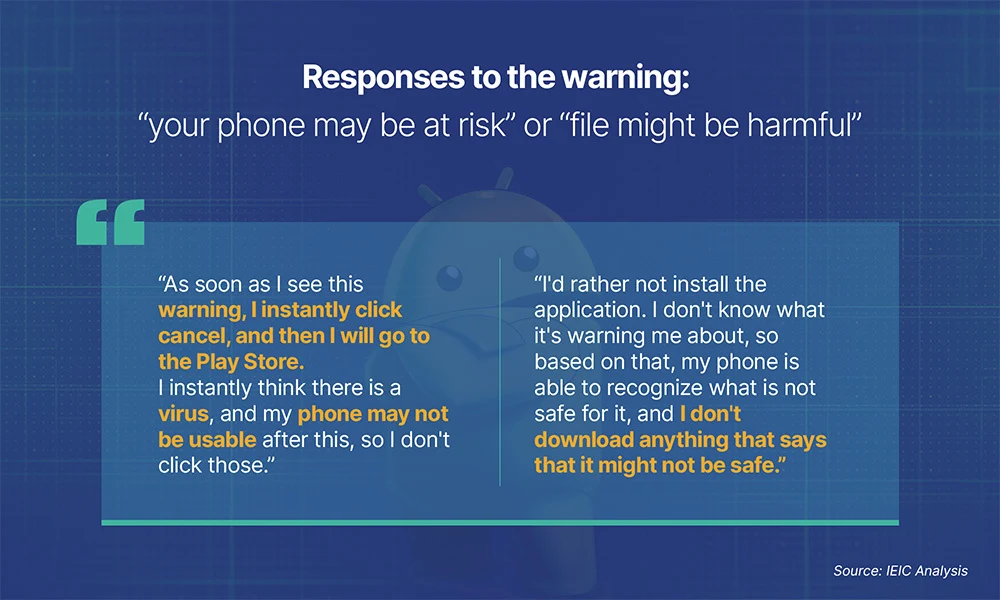Consumer Trust and Its Direct Impact on Gaming Businesses
A Deep Dive into Consumer Insights and the Platform’s Role

Just as citizens are the lifeblood of a thriving democracy, consumers are the heartbeat of the consumer tech industry. Their exercise of influence doesn’t just make or break businesses, but, it also shapes visions, drives innovation, fuels growth, and defines the scale. In the world of consumer tech, the true power lies not in the product but in the people who use it. The evidence of this is manifested in India’s fast-growing gaming industry, with an estimated size of USD 3.7 bn as of FY24, employing over 130,000 people and comprising around 2,000 companies. Notably, 90% of the Indian gaming market is mobile-first, compared to just 37% in the US and 62% in China. This mobile dominance has led to India consistently contributing 15–18% of global game application downloads, accounting for 11.2 billion mobile downloads, including those from alternative distribution channels beyond Google Play and Apple’s App Store.
This young Indian gaming industry, despite holding only 1.1% of the USD 324 billion global online gaming market, is fuelled by one of the largest consumer-driven segments, with over 591 million gamers, accounting for a resounding ~20% of the global 3.4 billion user base. The heart of the engine, the consumer, plays a pivotal role in the success of gaming studios and developers today. They drive revenue, shape platform design, and are instrumental in building trust and community around the game. Beyond this, without the consumer, there can be no innovation, as their user behaviour is crucial to investing in R&D around gaming, ultimately delivering the best gaming experience back to the consumers themselves. Community-building is the cornerstone of gaming studios' survival, as their very existence is defined by the players they serve. Trust isn’t just a byproduct of a well-made product; for consumer tech, and particularly gaming, it’s a driving force behind downloads, in-app purchases, reviews, ratings, and word-of-mouth virality. Today, the consumer is far more than a passive consumer; they are an active decision-maker, shaping the future of every product they engage with. In this blog, we explore how consumer trust and behavior lie at the heart of the success or failure of game developers, platforms, and the broader consumer tech ecosystem.
Research Insights from Consumer Survey
The IEIC Consumer Survey was conducted with a two-fold objective: first, to understand consumer download behavior and key insights therein; and second, to examine how trust influences where consumers choose to download apps, whether from applications or websites.

For the survey questions, Google Play was chosen as the reference point for this survey, solely because it dominates the mobile ecosystem in India, with Android holding a 96% market share and its search engine commanding 95% of the market in India.
Further, when a consumer downloads an application/APK outside the Google Play store and through any website (official or unofficial) on Android, the consumer receives a warning, “your phone may be at risk”.
Warning user received while trying to download App outside Google Playstore
Through this survey, emergent trends revealed how consumers think and feel about the choices and warnings presented to them on platforms and the Android ecosystem, as well as how platform design plays a critical role in either eroding or preserving consumer trust. Given below are the key questions and summarized responses:
1.Where do you usually download applications on your phone?

Out of Android consumers surveyed (714 respondents), 68% prefer to download apps from the Google Play Store, while over 25% opt for official websites, and the remaining 7% use unofficial sources. This highlights the strong influence of consumer trust in applications listed on the dominant platform: the Google Play Store. The preference is largely driven by perceived safety and legitimacy, as reinforced by insights from key informant interviews conducted alongside the survey.
2. How safe do you feel downloading apps from outside the Google Play Store?

Out of the 228 (32%) respondents, that selected official and unofficial sources in Question 1, 66% of consumers feel that downloading apps from outside the Google Play Store is unsafe, while only 32% consider it safe. This indicates a strong consumer trust in the Google Play Store as the default and secure source for app downloads. As a result, businesses that rely on their websites for app distribution are less likely to convert these cautious users into consumers. The data reflects a high level of hesitance toward third-party or alternative download sources, directly impacting visibility and reach for developers outside the Play Store ecosystem.
3. When downloading an APK from a website, do you receive any warnings? If yes, do you still proceed?

Out of the 228 (32%) respondents, that selected official and unofficial sources in Question 1, only 68% of consumers said they would proceed with downloading an app after receiving a warning, such as “your phone may be at risk.” These warnings act as a significant deterrent, with a notable portion of consumers hesitating or abandoning the download altogether. This underscores the power of platform-issued warnings in shaping consumer behavior and the challenges developers face when distributing apps outside dominant app stores.
IEIC also conducted key informant interviews to complement the survey findings. These interviews revealed deeper insights into consumer trust, perceived platform safety, and the barriers faced by developers, as outlined below:

Responses to the warning - “your phone may be at risk” or “file might be harmful”
- “As soon as I see this warning, I instantly click cancel, and then I will go to the Play Store. I instantly think there is a virus, and my phone may not be usable after this, so I don't click those.
- “As something like this (warning) pops up, I instantly leave.”
- “I'd rather not install the application. I don't know what it's warning me about, so based on that, my phone is able to recognize what is not safe for it, and I don't download anything that says that it might not be safe.”
- “When I see the warning, I feel that it's not real - it looks totally fake and you can tell by looking at it, and these reviews are not real at all. If I do a Google search, I will definitely find these images; it's a stock photo. I don't have a good feeling. If my phone warns me for the second time, I cannot download anything from any sources, but I simply don't want to download it.”
- “Even though you can say I can trust the website, I would say it's not worth the risk, so it's a personal red flag here. But if it's in the Play Store, no problem whatsoever, but there are too many pop-ups that remind me again and again how I can turn everything off so I can install it, so I don't want to download it on my phone, I don't want to do that.”
Platform Power: The judge, the jury, and the executioner
App distribution platforms like the Google Play Store are not neutral gateways; they actively shape consumer trust, discovery, and access. Google Play was chosen as the reference point for this study, solely because it dominates the mobile ecosystem in India, with Android holding a 96% market share and its search engine commanding 95% of the market. It also controls the entire digital advertising value chain, from the Play Store as the primary app distribution platform to the ad networks and data infrastructure that power visibility and monetization. As the gatekeeper for visibility, safety signals, and consumer access, Google Play significantly influences consumer perception and download behavior.
These platforms are now the judge, the jury, and the executioner - as they decide what gets visibility, what appears trustworthy, and what is considered safe to download. This centralization puts developers at the mercy of opaque platform design and algorithms, as well as evolving platform policies, directly affecting consumer acquisition and retention. High barriers to entry further entrench this power, particularly affecting small and medium-sized developers who often divert resources from product innovation to platform compliance, driven by fears of deplatforming or loss of visibility. This is not just an Indian problem; this market dominance has been flagged by several countries through regulatory actions and court orders, including Japan (for violating the antimonopoly law), US (Epic games case verdict), EU (for breaching anti trust laws, with penalties imposed upto €4 billion) and, very recently, by the UK (proposed measures to curb dominance under the CMA).
Implications for Game Developers and Businesses
The heavy reliance on major platforms like Google significantly restricts business choices for developers. Listing an app outside the Google Play Store comes with clear trade-offs: developers lose visibility, face higher consumer drop-off rates, and are forced to bear the burden of educating consumers about download safety, a challenge that can be both resource-intensive and ineffective. This monopoly-style control by dominant app stores impacts not only discovery and reach but also innovation, monetization, and direct-to-consumer growth.
For businesses, consumer trust is not just about brand loyalty; it encompasses perceptions of security, legitimacy, and social proof. Game developers today are not merely building products; they are building ecosystems of trust. This involves consumers wanting transparency in data practices, consistent updates, responsive support, and verified distribution channels.However, when platforms like Google control all the trust levers, including the ability to display warning messages, suppress visibility, or influence rankings, developers lose the ability to shape consumer trust directly.
For consumers, unaware of these platform dynamics, may misinterpret warnings or lack context, leading them to abandon alternative sources and return to dominant app stores by default. Ultimately, this dynamic affects business outcomes at every level, from user acquisition and retention to revenue and scalability.
A Call for Equitable Ecosystems: Reclaiming Trust and Choice in the Consumer Tech Landscape
A game, no matter how brilliant, cannot reach its audience if visibility is throttled, trust is undermined, or warnings dissuade consumers at the point of download. Such friction doesn't just impact developers; it limits consumer choice and distorts market outcomes. For consumers, empowerment means being able to make informed, confident decisions, not ones driven by opaque warnings or default platform settings. This requires decentralizing the mechanisms of trust-building, allowing developers to engage consumers directly, without the constant threat of deplatforming or reduced visibility.
For developers, especially emerging and independent studios, a fair and open distribution ecosystem is essential. Reducing platform-imposed friction enhances discoverability, drives consumer engagement, and strengthens business viability. When trust is dictated by platform policies rather than an authentic consumer experience, the entire ecosystem suffers, and it is ultimately the consumer who pays the price.
At its core, trust is the bridge between great games and loyal gamers. Distribution platforms must support, not control, that bridge. It's time to move toward an ecosystem where both developers and consumers can thrive, not despite the system, but because of it.
Views expressed are solely those of IEIC.



Ready to create impact?
Our members benefit from exclusive access to resources, industry events, workshops, events, incubation & investment opportunities


